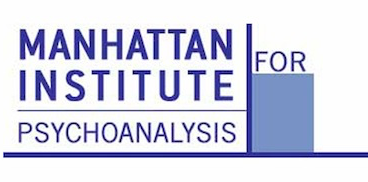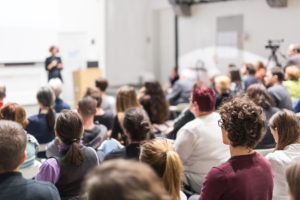In the third and final installment of our follow-up to the special series on COVID-19 (read Part I here and Part II here), we hear from four more of our original contributors in response to the question, six months later, where are we now?
By Andrew Hartz, Ph.D., author of Uncommon Teletherapy Suggestions
A few months ago, I wrote an article about how teletherapy has impacted psychotherapy. Since then, I’ve realized how much my article left out.
Two terms from religious studies come to mind: “secrets” and “mysteries.” Secrets are things we can know but not put into words. They might be emotions or sensations that few have experienced, or they could be more common experiences that people rarely notice or can’t articulate. Mysteries are things we can experience but not know. We feel them, but they defy our ability to conceptualize. They’re larger than ego-level thought. Now, months after my article, I find myself wrestling with the secrets and mysteries of tele-space. What are the novel emotions? An odd tonality, a disjointed rhythm, a sour flavor, a type of energy? Do ghosts from closed browser windows haunt our screen? Is the aggressivity of the camera eating our flesh? Do our fantasies and patients dreamily merge? It’s shocking that insurance companies may start to argue that there’s no difference between Zoom and in-person therapy. Who can’t tell the difference between in-person interactions and Skype?! But it’s hard to explain. It’s getting easier and easier to fantasize about a dystopic future in which everything that can’t be named, measured, and digitized is deleted. We’ll be forced to either roboticize or despair.
In Marx’s theory of commodity fetishism, he claims that industrial capitalism pushes us to treat people like commodities and commodities like people. Now, in the digital age, electronic devices have become attachment objects and human beings are downloaded and deleted like apps. Maybe Marx’s prophecy is being fulfilled. Then again, I’ve also found my role more valued than ever. Patients inquire more about me. There’s more intimacy in our shared experience. Maybe the digitizing of therapy has strangely enhanced our value and our humanity as therapists?
There’s so much to say, and language clearly hasn’t kept pace with technology. We may never find all the words for this ocean of new experiences, but like it or not, we’re swimming in them.
Andrew Hartz, Ph.D., is a clinical psychologist completing a postdoctoral fellowship in private practice in New York City. He completed his Ph.D. at Long Island University (Brooklyn) and did his clinical training at Columbia University Medical Center, Mount Sinai Hospital, and the William Alanson White Institute. His website is hartzpsychology.com.
Stay tuned for further reflections on teletherapy from Andrew Hartz, Ph.D., next month on the blog!
By Kathryn Moreno, LCAT, ATR-BC, author of Worth One Thousand Words: Art-Making During COVID-19
I’ve stayed in the city throughout the pandemic. The streets are no longer eerily empty, and the view from my window appears bustling and almost back to normal now, except for the masks. My “new normal” is now routine, which makes it easier to not think about everything I miss. Still, it’s hard sometimes. Six months since the start of quarantine, social distancing is just as hard. I focus on the enjoyable parts of my day, wearing comfortable pants and enjoying a homemade lunch with my husband, who works from home with me. And I remember my COVID miracle. I am pregnant, and it feels more and more real every day. I did not imagine myself pregnant six months ago, and I never imagined myself pregnant during a pandemic. Sometimes the reality of COVID-19 is so scary and lonely, but I feel truly blessed and full of hope for the future.
Kathryn Moreno, LCAT, ATR-BC, is a creative arts therapist in private practice in Manhattan. She is in her third year of analytic training at MIP.
By Lindsay Nejmeh, LMHC, contributor to Worth One Thousand Words: Art-Making During COVID-19
A lot has changed in six months. But a lot has not. When I look at my painting from our Zoom Paint and Sip, tingles go up and down my spine. I see fear and safety in the strokes of my brush. I painted while embracing the world’s swirling sense of doom. Sadly, this still feels relevant. However, the sobering experience of mourning with the entire human race brought perspective and change. I was forced to look deeper, which mirrored psychoanalysis at its finest. On some level I think the world did too. I can only hope that my next painting is colored with evolution.
Lindsay Nejmeh, LMHC, is a psychotherapist in private practice in New York City. She is trained as a Mental Health Counselor and works with adults and children. She is a third-year candidate in the License Qualifying Program (LQP) at the Manhattan Institute for Psychoanalysis.
By Tom Pollak, LCAT, contributor to Worth One Thousand Words: Art-Making During COVID-19
I feel more anxious now than I did at the beginning. In the first phase we have been able to do socially distant art groups outside—but with shorter and colder days ahead—this will not be possible. Winter will create more isolation and (probably) loneliness and more depression. Alas!
The census at the psychiatric unit (where I work as a per diem art therapist) is full. COVID has created unbearable conditions at home for some of the patients. There is an uptick in family abuse and addiction problems. Loss of jobs and financial problems are triggers for crisis. Racial divisiveness and blaming are inflaming the situation. I de-stress by hiking, making art and playing tennis before the winter comes.
Tom Pollak, LCAT, has been an art therapist at Montefiore’s Mount Vernon psych unit, Rockland Psychiatric Center, and Four Winds Hospital.
If you enjoyed this post, we recommend:
Psychoanalytic Training with a Side of Pasta by Lindsay Nejmeh, LMHC
Using Psychoanalytic Understanding to Face Climate Change by Elizabeth Allured, Psy.D, and Wendy Greenspun, Ph.D.








Leave a Reply
Your email is safe with us.